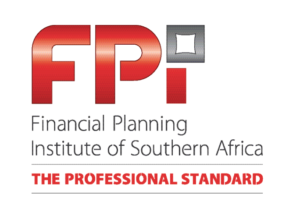The best way to future-proof your business in the new regulatory environment is to forget about compliance and focus on the client/customer or consumer (whatever your preferred terminology is, I will use client for this article). Now before I get quoted as saying that compliance is not necessary, because it is, what I am saying is that compliance needs to be approached with the client in mind, not the regulation.
In the policy document that accompanied the release of the COFI bill in 2018, the following paragraph appears:
“A narrow focus on rigid rules and compliance reporting has often led to the letter of the law being followed while the spirit of the law is missed. A principles-based approach seeks to set principles that specify the intention of regulation, rather than set rules detailing requirements of a financial institution.”
My interpretation of this is that there is the recognition that in a purely rules-based system, compliance with the law can become a tick-box exercise. It becomes more about whether I have the requisite piece of paper than whether I have focused on the client outcome. In the new regulatory environment, compliance will demand that we answer the question: “Have I done this by the client?” rather than: “Have I done this by the book?”
Now before we celebrate too much with the transition to a principles-based environment, we must remember that the rules will not just be thrown out the window. I again quote from the policy paper:
“However, a principles-based approach does not mean an absence of rules. It is well-recognised that an appropriate mix of principles and rules is required to achieve the correct outcomes. Rules may be required to protect highly vulnerable consumers, where market dynamics create poor incentives for providers (like in the consumer credit insurance market) or to respond to sustained egregious behaviour and practices.
compliance needs to be approached with the client in mind, not the regulation
“The approach is therefore towards a more effective balance between principles-based and rules-based measures to achieve desired outcomes, in contrast to the current framework’s heavy reliance on rules.”
To future-proof yourself, you need to be in a position to understand why you are doing something. Take, for example, the disclosure letter.
Why is it that we issue a disclosure letter to new clients? Is it something that is done so that we can comply with legislation, to provide the potential client with information that can make an informed decision, or to market your business to the client and start building trust?

While writing this article, I did a Google search for “FAIS Disclosure”. All of the entries either started with “In complying with the FAIS legislation” or “disclosures required in terms of the Financial Advisers and Intermediary Services Act”. Not a single one started with: “In order for you to make an informed decision about working with me and my firm, here is some information that we would like you to know.”
In the first instance, the disclosure starting “in complying with” infers that if the legislation did not require me to provide the information, I would not have done so. The second is more a statement of voluntarily providing information, that WILL comply with the legislation, but in a way that is more client focused.
The letters I reviewed then went on to describe the licence categories (Cat I or CatII) and the products, namely, Long Term Insurance A, B1, B2 and C, retail pension benefits, etc. Now does this really provide the client with a reasonable understanding of the products one can advise on?
To future-proof yourself, you need to be in a position to understand why you are doing something.
I have been in financial services for 22 years and I still need to look up some of these definitions. Why is it that we cannot disclose what products we work with in plain English and not regulatory jargon, while attaching a copy of the licence with the licence categories?
We then go on to list the product providers we have contracts with and are sure to advise that we do not hold more than 10% of shares, nor have we earned more than 30% of our fees from any provider (even though the General Code of Conduct requires us to disclose if we have breached the limits). While disclosing this may be a good thing, there should be a purpose to the disclosure.

The form of the disclosure letter was also almost 100% identical and followed a legalistic approach. Not one was written in a client-centric format. Why can the disclosure letter not be a company information brochure (that contains all the required information) that is written from a client and/or market viewpoint, rather than purely with regard to compliance?
Conclusion
In closing I would like to use Simon Sinek’s How, What and Why methodology.
Start with Why – what is the value proposition that you are providing to your client? Why are you providing the information to the client?
Worry about the What – ensure that the relevant and required information is provided.
Determine the How – the information should be presented in a unique way that meets the Why and the What, but differentiates you from your competitors. In my opinion, the disclosure document should be used as an opportunity to start building the client relationship and trust.
If you can switch away from the mindset of doing something because your compliance officer or a piece of legislation tells you to, to ensuring that you examine everything you do from the client perspective, you will be future-proof.
Featured images: iStock









